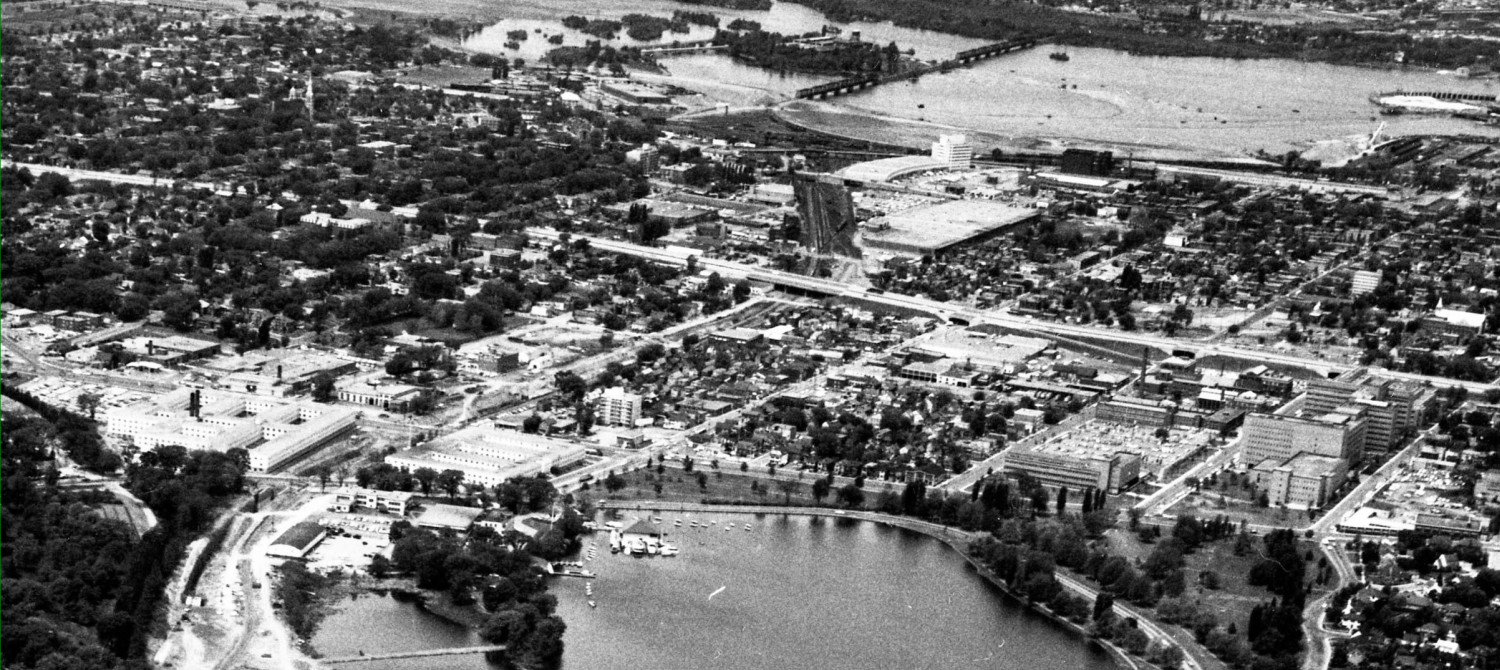Bronson north of Somerset is busy — at rush hours. Outside the peak commuter hours, the street is not all that busy. But the wide street with four lanes makes pedestrian crossing unsafe. Landscaping is minimal. The housing and apartments suffer from high tennant turnover because of noise and dust. A classic case of urban street in decline. Thus far the city’s idea for this street is to widen it.
Looking at the section from Laurier (top of the hill) to Somerset, the traffic volumes are 16-20,000 vehicles per day (the AADT or Average Annual Daily Traffic count). Volumes have not increased between 2003 and 2008.
There is extensive traffic engineering literature that describes what should be done to a four lane urban arterial with this volume of traffic: put it on a diet, narrow it to three lanes.
At first this may seem counter intuitive. How can a busy, congested four lane road be improved by making it narrower? The answer lies in challenging the assumption that it is four lanes, but as demonstrated yesterday, it is really a road consisting of a right turn lane, a left turn lane, and through traffic that lane switches throughout the length. It does not currently function as a four lane through road.
There are two models of three lane roads that are recommended in the literature to replace the awful arrangment currently on Bronson.
Two lanes + turn lanes at intersections: this layout would reduce Bronson to two lanes of through traffic, with the addition of a left turn lane at major intersections (Laurier, Primrose, Somerset). The former curb-side lanes would be used for parking bays, or a wider boulevard with trees, lamps, and wider amenity space that could reintroduce city life to this abused traditional main street. For an example of this treatment, look at Preston.
Two lanes + TWLTL: this layout has two lanes for through traffic (which is more than the street functionally has now) and a centre lane that is Two Way Left Turn Lane. The centre lane is usually wider than the through lanes, and has arrows painted on it to show when left or right turns are permitted. On streets with the volume of this section of Bronson, the traffic literature shows this to be a very safe solution that will reduce traffic accidents, maintain traffic volumes, and drastically increase the satisfaction of road users, residents, and businesses.
The second approach often does not permit on-street parking or even off-peak parking. But the curb side lanes can be wide enough (15′) to permit safer cycling, plus wider sidewalks with curbside tree planting to calm the environment.
Next: how to get 2 lanes + TWLTL on Bronson.


